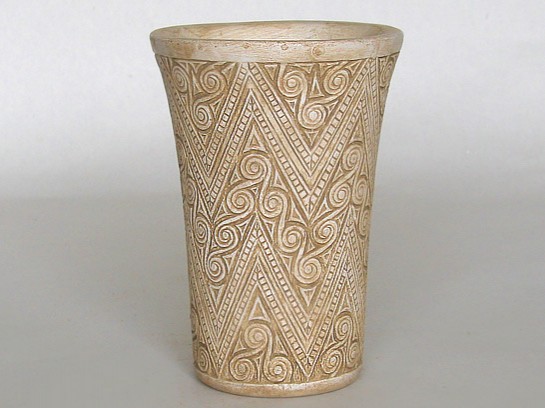Knossos is the largest Bronze Age archaeological site on Crete, probably the ceremonial and political center of the Minoan civilization and culture.
It is a popular tourist destination today, as it is near the main city of Heraklion and has been substantially if imaginatively "rebuilt", making the site accessible to the casual visitor in a way that a field of unmarked ruins is not.
The city of Knossos remained important through the Classical and Roman periods, but its population shifted to the new Arab town of Handaq (modern Heraklion) during the 9th century AD. By the 13th century, it was called Makryteikhos 'Long Wall'; the bishops of Gortyn continued to call themselves Bishops of Knossos until the 19th century. Today, the name is used only for the archaeological site situated in the suburbs of Heralkion.
The ruins at Knossos were discovered in 1878 by Minos Kalokairinos, a Cretan merchant and antiquarian. He conducted the first excavations, which brought to light part of the storage magazines in the west wing and a section of the west facade. After Kalokairinos, several people attempted to continue the excavations, but it was not until March 16, 1900 that archeologist Arthur Evans , an English gentleman of independent means, was able to purchase the entire site and conduct massive excavations. The excavation and restoration of Knossos, and the discovery of the culture he labelled Minoan, is inseparable from the individual Evans.
Nowadays archeology is a field of academic teamwork and scientific rigour, but a century ago a project could be driven by one wealthy and self-taught person. Assisted by Dr. Duncan Mackenzie, who had already distinguished himself by his excavations on the island of Melos, and Mr. Fyfe, the British School at Athens architect, Evans employed a large staff of local labourers as excavators and within a few months had uncovered a substantial portion of what he named the Palace of Minos.
The term palace may be misleading in modern English, it usually refers to an elegant building used to house a head of state or similar. Knossos was a complex collection of over 1000 interlocking rooms, some of which served as artisans' workrooms and food processing centres (e.g. wine presses). It served as a central storage point, and a religious and administrative centre.
The site has had a very long history of human habitation, beginning with the founding of the first Neolithic settlement circa 7000 BCE. Over time and during several different phases that had their own social dynamic, Knossos grew until, by the 19th to 16th centuries BCE (during the 'Old Palace' and the succeeding 'Neo-palatial' periods), the settlement possessed not only a monumental administrative and religious center (i.e., the Palace), but also a surrounding population of 5000-8000 people.
Product Details
Code: 123
Dimensions: 9,4x12,5cm
Colors: White, Black, Brown
